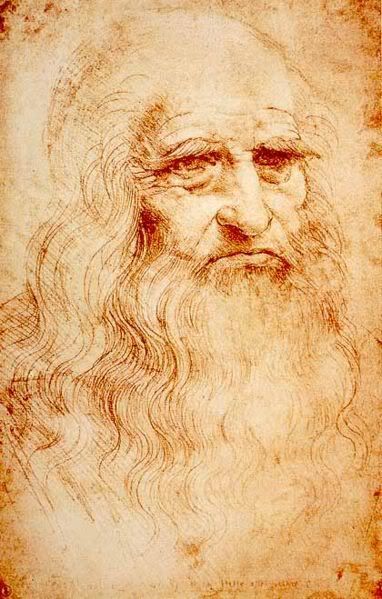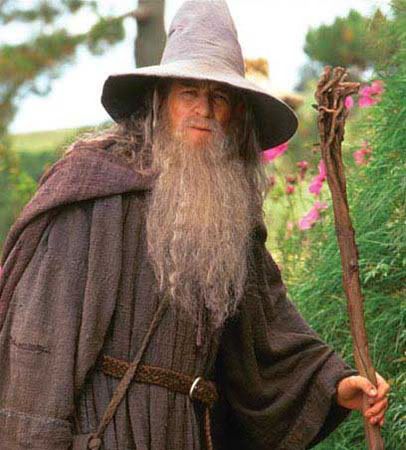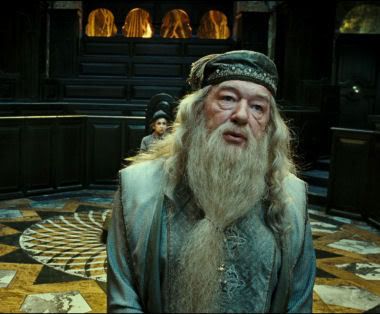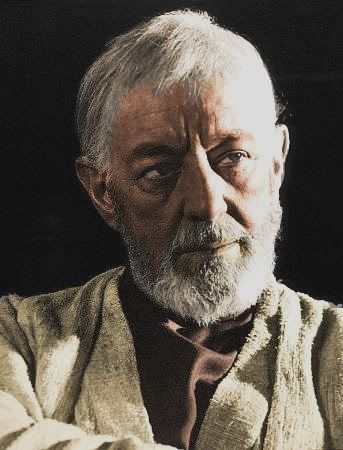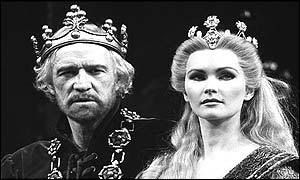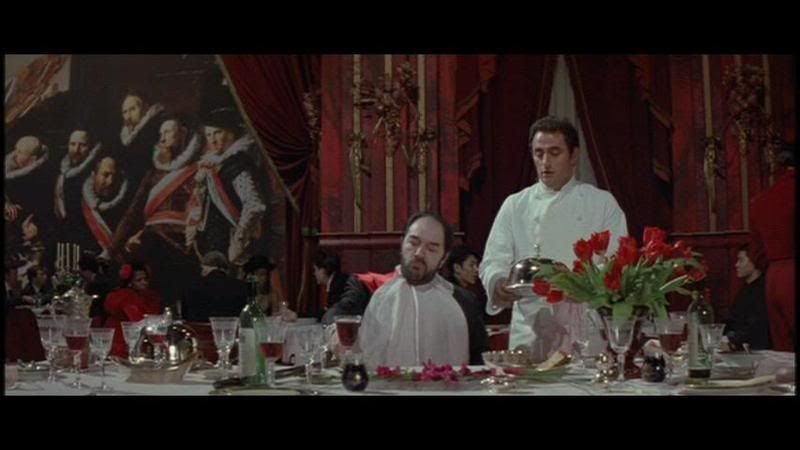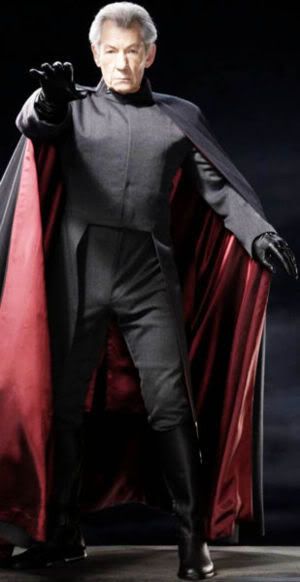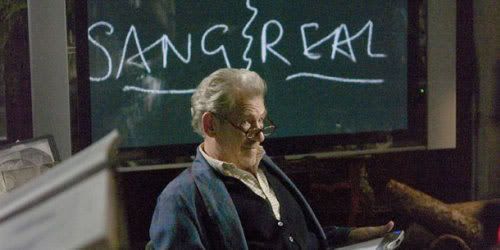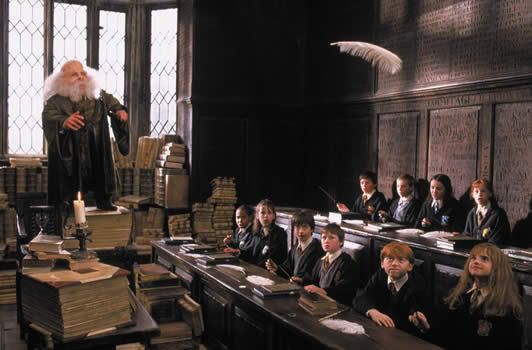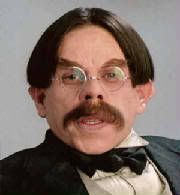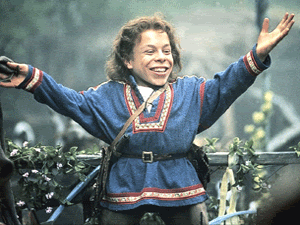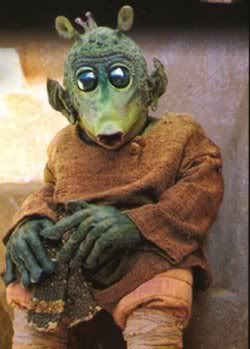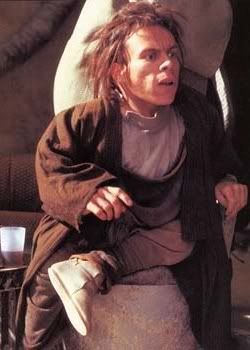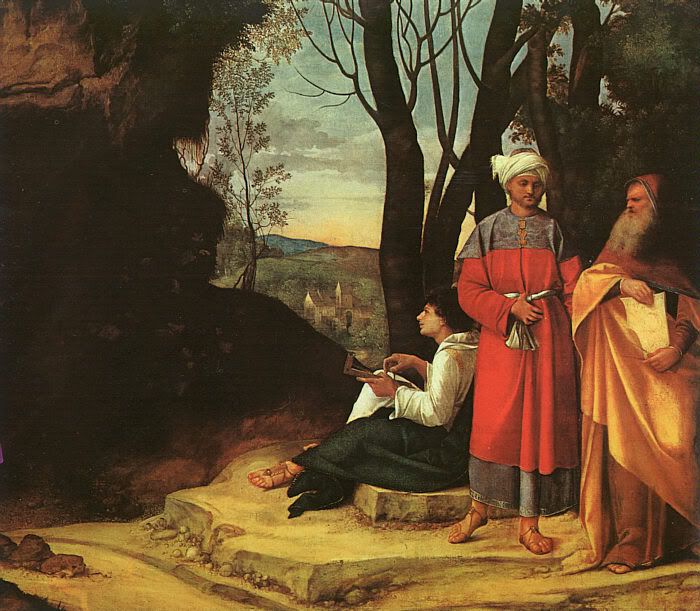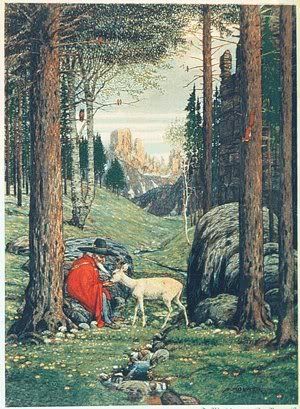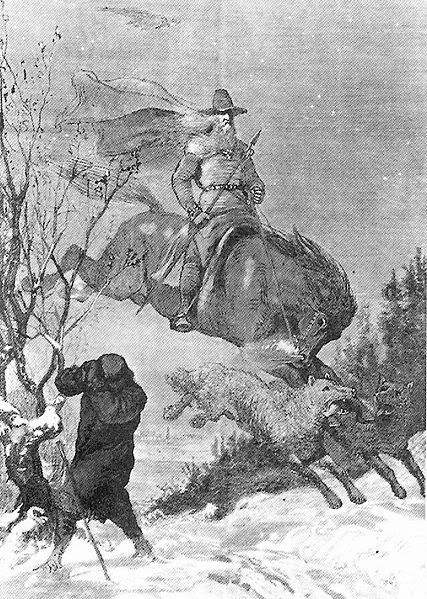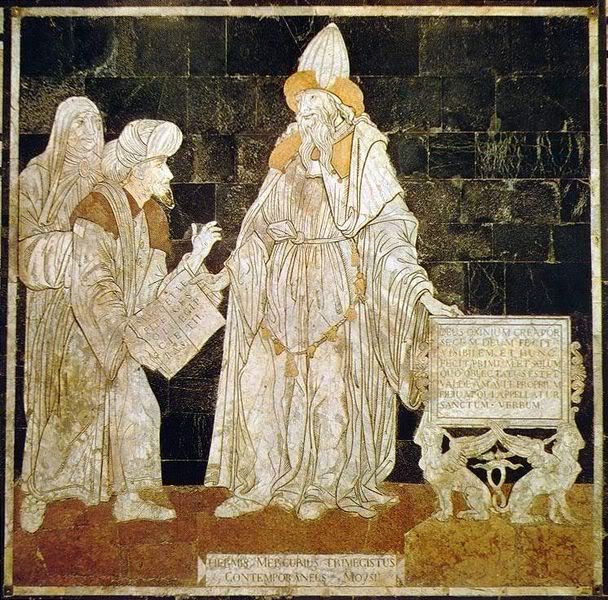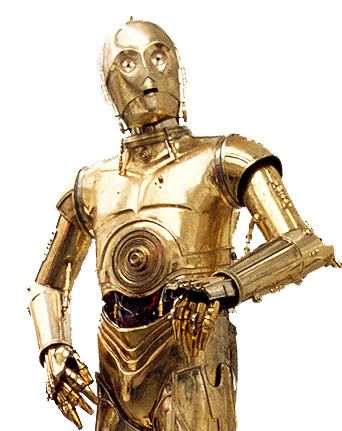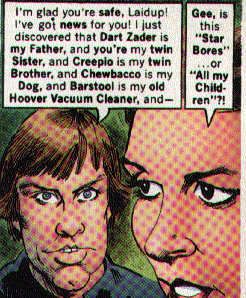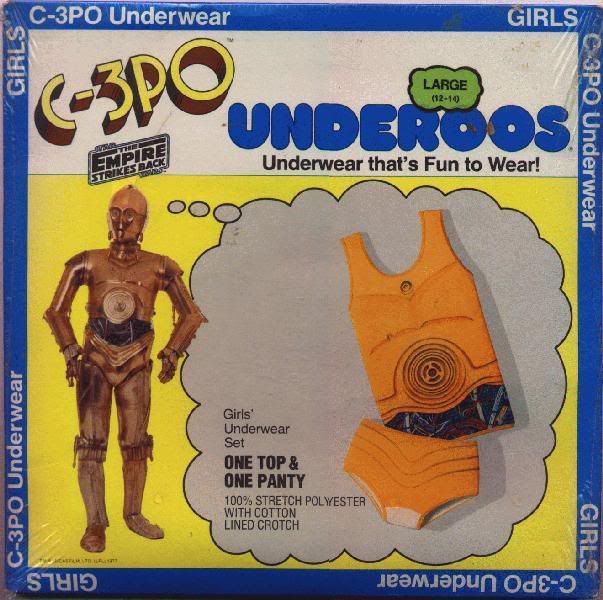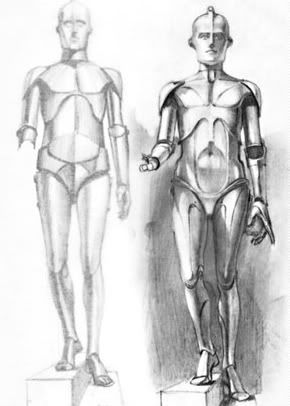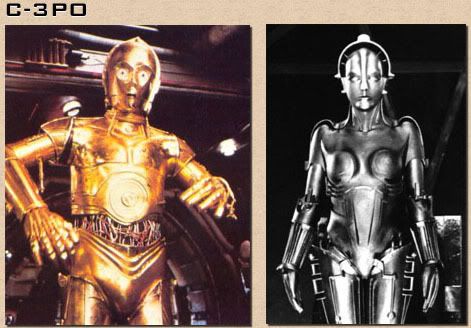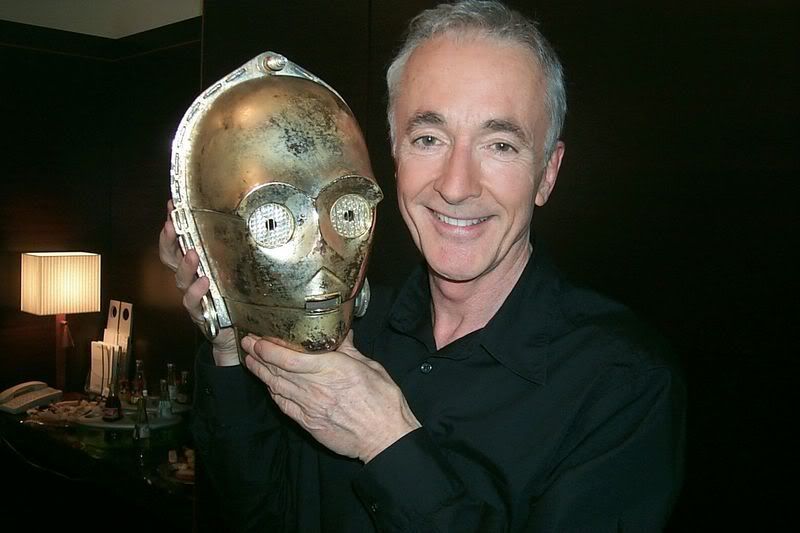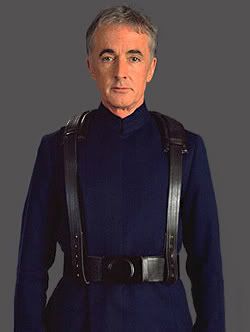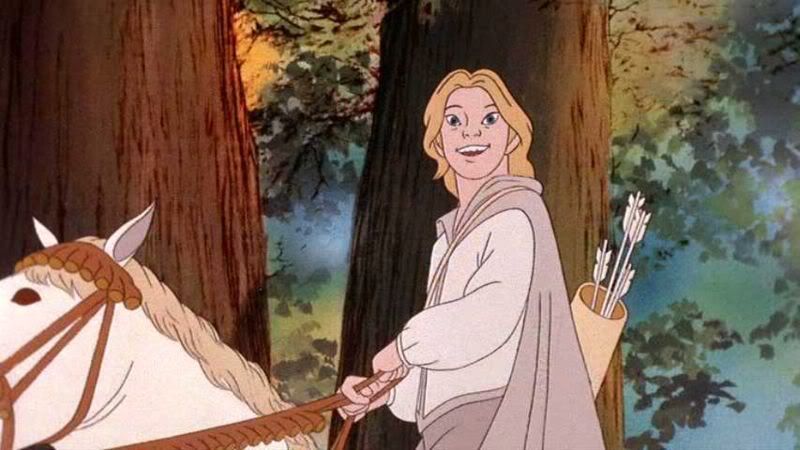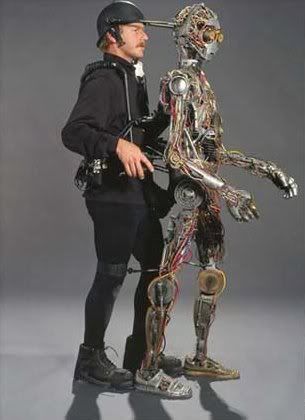Now we reach the heart of the R2-D2 matter as we address his pivotal role in the key events of the original Star Wars trilogy. To recap, R2 is the McGuffin personified as the ultimate hero. His divine origins are highlighted by the synchronistic cocreation of Ray Harryhausen's magical robot owl Bubo from "Clash of the Titans", a literal deus ex machina. This status as "messenger of the gods" is also reemphasized by Lucas and Spielberg equating R2 with some of their most significant artifacts, the Mothership and the Ark of the Covenant. Further synchronistic confirmation of his higher nature lies in his performance by actor Kenny Baker who shares a birthday with Osiris/Dionysus, and whose next most famous role was as one of the craftsmen of the universe in "Time Bandits".
It's very telling that R2 was manufactured on a planet called Nubia and perfected by the master mason Royal Engineers of Naboo (Nabu/Thoth/Hermes/Mercury). He's an astromech droid designed to be an all purpose space travel aid, including the ability to perform hyperspace navigations, meaning he thinks faster than light and has an extradimensional perception of reality. We can suppose that R2 is able in some way to see forward and backward in time, perhaps explaining his ability to be in just the right place at just the right moment and informing the seemingly incidental actions he takes that lead to events of the greatest galactic and spiritual consequence.
R2-D2 and Fate (R2-D2 is the Agent or Engine of Fate) lead to the introduction of Anakin Skywalker to Qui-Gon Jinn, Obi-Wan Kenobi, Padmé Amidala and Chancellor Palpatine/Darth Sidious. He's a witness to the secret wedding of Anakin and Padmé, an event with significant consequence to R2's personal status. Droids are normally considered objects, no more than personal possessions. During the Clone Wars R2 is gifted by Padmé to Anakin, but being a Jedi, Anakin is forbidden from personal possessions beyond his robes and lightsaber. This quietly makes R2 no one's property from that point forward, despite what others might think, and R2 isn't above the manipulation of organics by any means.
Following the failed attempt to rescue Anakin (from himself) on Mustafar, R2 and 3PO traveled with Obi-Wan to the Jedi sanctuary Polis Massa where they witnessed the birth of Luke and Leia and the death of Amidala. While Luke was brought to Tatooine by Obi-Wan, R2 and 3PO were kept near Leia. They were assigned by Leia's adoptive father Senator Bail Organa to service on the
Tantive IV under the command of Raymus Antilles. 3PO had his memory wiped but R2, perhaps because no one owns him, was left intact.
This is the location of the Droids nineteen years later when the events of "A New Hope" take place. Canonically an accident caused the duo to be lost from the Tantive IV for a number of adventures (the
"Star Wars: Droids" cartoon series). I like to think of this as R2-D2 reconditioning, or initiating, the memory wiped 3PO for the monumental future events R2 could perceive on the event horizon.
Despite truly astronomical odds the two small Droids bounced around the galaxy and passed from hand to hand, only to end up back where they were supposed to be in plenty of time for the Tantive IV's mission to transport the Death Star plans to the Rebel Alliance and locate Obi-Wan Kenobi on Tatooine. Their improbable return to the Tantive IV is explained as Bail Organa's efforts to relocate the Droids and return them to the ship, and he's a key player to be sure, but it is even easier to posit that R2's enhanced cognition allowed him the foresight to be where he needed to be when he needed to be there.
Certainly Bail Organa recognized the significance of R2 and 3PO, though its clear Leia was never filled in. Bail provides her with the use of the Tantive IV and thus the service of the very important Droids. Having faithfully served both of her natural parents the Droids are similarly positioned to do the same for Leia.
In the commentary for "A New Hope" Lucas points out that the original trilogy is the intertwining of the stories of the Skywalker twins, their separate experiences becoming one in the course of the first film. Luke's story starts at the beginning of his journey and his initiation to his higher purpose and the universe around him. Leia's story on the other hand is already in progress as the movie begins. She is already an experienced politician and a major player in the rebellion against the Galactic Empire. It's interesting to note in this that Leia's head start includes contact with the Droids. Luke's story doesn't really begin until the Droids enter his life.
But I'm getting ahead of myself. Star Wars opens with the Tantive IV being attacked by an Imperial Star Destroyer and boarded by Stormtroopers. Almost at first sight the audience witnesses a display of R2's astromech super-cognition as he navigates himself and 3PO across a hallway full of blaster fire completely unscathed.
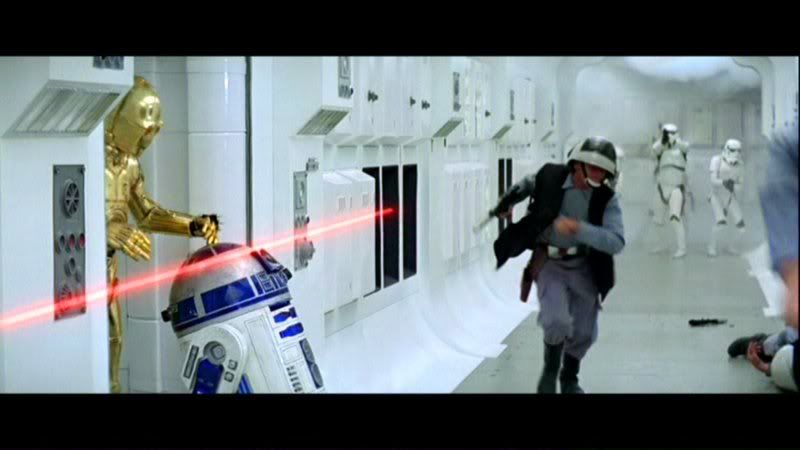
He's not very fast but he's got moves. As this occurs above Tatooine we can see that the Princess almost accomplished her mission to make contact with Obi-Wan before being captured. Bail, who sent her on this mission, was certainly aware of the purpose of Obi-Wan's self-exile on Tatooine, to watch over the son of Anakin Skywalker. While choosing not to inform Leia of the existence of her brother, Organa must have had some concept that he was bringing Leia into (relatively) close proximity to her twin. We might suppose that this action, occurring amongst Organa, Obi-Wan and possibly R2, is an act of desperation in the face of the Death Star and the Force powers of Palpatine and Darth Vader. Perhaps the underlying plan was for Obi-Wan to train Leia as a Jedi. This seems to be the essential scenario of the early version of Star Wars where the Princess was the protagonist, "The Hidden Fortress" in space.
If that was the plan, Darth Vader's capture of Leia subverted it. With the situation looking hopeless, Plan B was engaged. I think it is conceivable that to some extent R2, Bail, Obi-Wan, possibly Chewbacca, and hell, maybe Yoda and the ghost of Qui-Gon Jinn, had preplanned the Luke Skywalker contingency plan, with Leia knowing just enough to deposit the Death Star plans into R2-D2 along with her message to Obi-Wan. It's possible she was even told exactly what to say for the recording as her script is the perfect bait for bored, romantic farm boys. It is interesting to note that, despite his fearsome presence and powers, Darth Vader by "A New Hope" is intended to be somewhat pathetic. His cybernetic nature lessens rather then bolsters his Force ability. Vader fails to recognize or otherwise sense that Princess Leia is his daughter. He fails to sense the presence on the Tantive IV of R2-D2, who he was highly familiar with, or C-3PO, who he made. He must have recognized Tatooine as his home world and the place where his mother died, but he fails to sense either Kenobi or his son on the planet below. He may just be off as he sharpens up his act by the end of the film and shines in Empire. Throughout "A New Hope" Vader seems like he has a bad headache or something, and you know, that may be the case. I hear
phantom limb syndrome can be terrible.
Demonstrating his personal freedom (and the mandate of the mission given to him by the Princess), R2 contradicts the restrictions on droids utilizing escape pods, a subtle point regarding the ultra low-class status of droids.
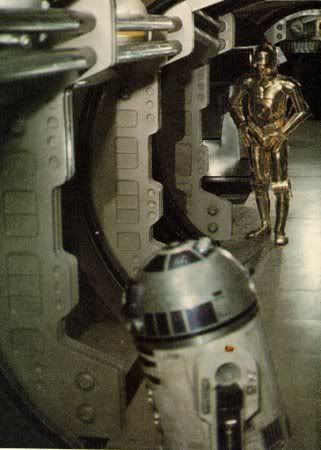
3PO is less capable of independent action, but has a remarkably developed sense of self-preservation which causes him to follow R2 to Tatooine and then to separate from him once they're on the planet. R2 knows where he needs to go, 3PO merely wants to take what he perceives to be the easiest path.


I'll have much more to say about C-3PO and his role in future articles, but R2 is seeking the most direct route to Obi-Wan Kenobi in the Jundland Wastes. But the Force seems to be with C-3PO (not a grandiose concept at all considering who built him). While the escape pod of the Tantive IV, piloted by R2, brought them near to Obi-Wan's location, which of course is near Luke's location at the Lars moisture farm, it seems pure chance that C-3PO gets captured by the particular group of Jawas who would shortly thereafter stop at the Lars farm to make a sale, returning 3PO to a place he lived over twenty years earlier. This same group of Jawas also retrieved R2, despite his traveling in the opposite direction.

The radio-drama adaptation of "A New Hope" deals with this by having C-3PO ask the Jawas if they had seen R2-D2, thereby informing the acquisitive tribe that there was a valuable astromech droid nearby. So maybe going to the Lars farm is R2-D2's idea, with influential 3PO selling it to the Jawas.
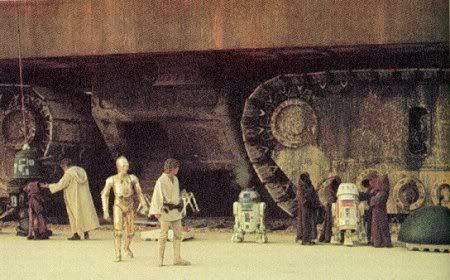
Something very strange occurs here which on the surface can be read as the disregard shown towards droids by the organic sentients of the Star Wars universe. We see repeatedly throughout the films that the appearance of R2 and 3PO are commonplace amongst droids of their type, so it is not all that surprising that they are not recognized on sight by Owen Lars. However, the serial number/names of droids seem to be unique. Owen Lars lived with C-3PO for a period of time. Surely then the name should have rang a bell with him. But he never seems to recognize the droid his step-brother built and which served his step-mother, and lived with him at that very farm. If he does he never vocalizes it, but if his goal was to keep Luke from following in his father's footsteps, it seems unlikely he'd want to have his old droids around. I'll have more to say on this point when I more fully concentrate on C-3PO, but for now I can state that one of the points where I agree with Jack and Richard Eggers semi-satirical
Skywalker Paradigm is that a protocol droid built by Anakin Skywalker could conceivably have some subtle special abilities. I won't quite say mind tricks, but rather highly influential. C-3PO quickly convinces Owen Lars to purchase him. If Owen recognizes him he never vocalizes it on screen. If he does it seems odd that he'd bring these known Anakin-related droids on the farm.
R2 almost is left behind when Lars opts for
R5-D4 over R2.
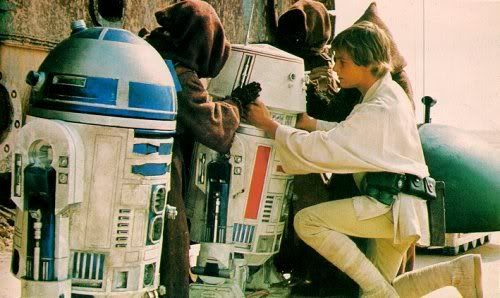
There has been more than one suggestion concerning what mechanism causes R5's "motivator" to blow at just the right moment. There's a kind of charm to the idea that R5 sacrifices himself in order to keep the R2/3PO team intact, an act of droid solidarity, or a decision perhaps based upon R5's own enhanced astromech perceptions. For some reason there's something more satisfying about R2 subtly sabotaging R5, maybe with some kind of invisible beam emitter. Whatever the case, 3PO then easily convinces Luke to have Owen purchase R2-D2 instead.
I also agree with the Eggers in their viewpoint that when Luke cleaned R2 and "accidentally" triggered the loop of Leia's message for Obi-Wan that this was R2 and 3PO baiting and conning Luke in order to further their mission. It works like a charm, and Luke is easily talked into removing R2's restraining bolt. 3PO here plays nice cop seeming to side with Luke but this is just droid drama. 3PO's job is to keep Luke distracted as R2 plays his trick (kind of like Penn and Teller). After Luke leaves to drink Blue Milk, R2 takes off. R2 should have been capable of removing the restraining bolt on 3PO. 3PO is left to help Luke follow R2 to Obi-Wan. Note that R2's escape directly saves Luke's life.
Fate and R2-D2 then cause Luke's reintroduction to Ben Kenobi to occur in as dramatic a moment as possible, with Luke attacked and over powered by Tusken Raiders and Kenobi coming to the rescue. Obi-Wan's first line of dialog is to R2-D2, a very friendly "Hello there", because they are indeed old friends. Old friends who mutually choose not to inform anyone else about their previous relationship. There's no possible argument that Obi-Wan does not recognize R2-D2 or vice versa.
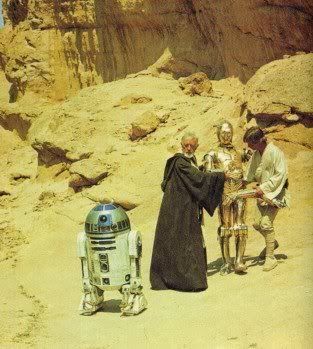
Note how Obi-Wan, R2 and 3PO all lie like crazy to Luke at this point as a means to maneuver him into training as a Jedi Knight. 3PO tells Luke that the hologram was of someone from their ship, someone who he thinks was important, like he didn't really know her. But he must have known who the Princess was, and this is made certain by his statement on the Tantive IV that "There'll be no escape for the Princess this time". When R2 insists he's the property of Obi-Wan Kenobi, he's lying, he never belonged to Obi-Wan. When Obi-Wan states that he can't recall ever owning a droid he both is and isn't lying, which is his way. Technically Jedi's can't own droids, and it's true that R2 was never directly his, but he did work regularly with a couple of astromech droids during the Clone Wars,
R4-P17 and
R4-G9, and he could have said "He's not mine, but-". Or how about "These were your father's droids and that's your twin sister".
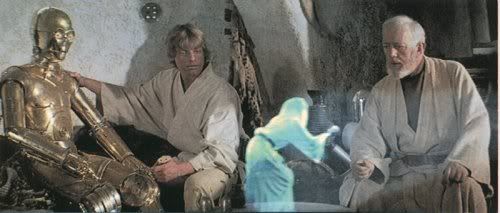
But he can't say that of course due to fear of leading Luke right into Vader and Palpatine's hands. And he has every reason to be afraid of Luke's dark side potential.
Meanwhile Darth Vader and Grand Moff Tarkin are desperate to retrieve the plans for the Death Star. We must imagine some form of devious Imperial encryption that prevented multiple copies of the information from being instantly made and beamed to the Rebels. Tracking the Droids to the Jawa clan, the Imperials utilized lethal force in order to extract the information of who the Droids were sold to. Then as a cover up a cursory effort was made to make the scene look like the work of Tusken Raiders rather than the Imperials. Why should this fascist police force bother covering up their crime? As the path of least resistance. We can imagine that many of the struggling moisture farmers of Tatooine were economically dependent upon salvaged droid labor provided by Jawas to a degree where the wholesale slaughter of an entire clan would have caused static that was easier to avoid. It's easy enough to blame things on the anti-social Tusken Raiders. Murdering the Lars was a different matter. If anyone at all cared the Imperials would state they resisted an Imperial inspection. Whatever the case, impeccable astromech timing and planning positioned the Droids and Luke away from the farm just when they needed to be.
At the Mos Eisley Cantina we see droid discrimination in action as the bartender refuses to allow R2 and 3PO to stay in the bar. We can forgive Luke for his naivety perhaps, but considering that the Imperials are hotly searching for the Droids it seems foolish for Obi-Wan to let them out of sight. This though is Obi-Wan's experienced faith in R2's ability to escape from sticky situations. He really could have left Luke outside with the Droids as he hired a pilot. I believe it was more important for Kenobi at that point to initiate Luke to the capabilities of a lightsaber. If so that means that mind trick master Obi-Wan didn't just come to Luke's defense but subliminally provoked the fight at the cantina. Their ride off planet was more or less prearranged anyway, with Obi-Wan's friend of a friend Chewbacca.
Outside R2 again shows his resourcefulness by hiding from Stormtrooper patrols behind a locked door. While the Empire might be desperate to retrieve the Death Star plans, it would be neither cost or time effective to kick down every locked door they encounter, especially as their search is shown to work more effectively with plain clothes narcs like the bug-eyed phallic nosed individual who almost gets Obi-Wan and company caught.
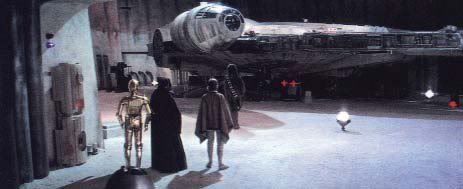
But of course they manage to get away in the nick of time, as always. Luke's crash course in the Force begins as soon as they make the jump to lightspeed. Note that the aspect of the Millennium Falcon that makes her such a fast transport is her superior hyperspace navigation systems. It is not thrust that wins the hyperspace race but the ability to calculate the best route from A to B. R2 and the Millennium Falcon have this feature in common.
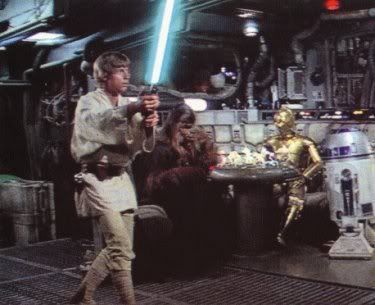
As Luke receives direct Jedi initiation we find the Droids and Chewbacca engaging in a match of
Dejarik, a game developed by the Jedi, which as you can see is played on a checkerboard pattern on an inner and outer ring, each with twelve spaces.
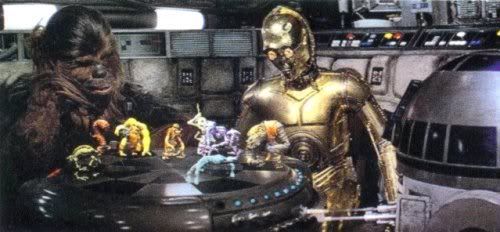
A game of space chess between a dog-man and magical droids played on a mushroom shaped board as Luke is inducted into a secret society. This is my favorite scene in "A New Hope".
On the Death Star R2 proves to be invaluable as he hacks into its computer systems and determines a means of shutting down the tractor beam. He keeps surfing the Death Star's system and discovers the Princess is being held there as well.
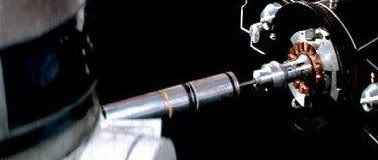
Then when Luke, Leia, Han and Chewie get stuck in the trash compactor it's R2 who saves them once again. Everyone makes it back to the ship just in time to witness Obi-Wan's apparent demise (in actuality his active joining with the Living Force, Vader never beats Obi-Wan).
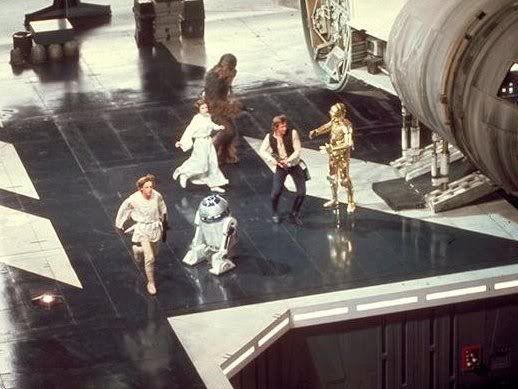
Thanks to the navigational system of the Millennium Falcon they manage to escape the Death Star and reach Yavin IV (though in fact Vader allows them to escape so the Empire can track them to the Rebel base). Finally R2 is able to download his Death Star data.
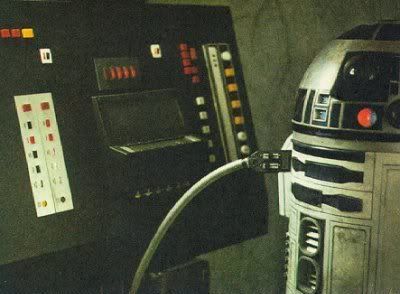
Luke already is able to recognize the capabilities of R2 and takes him as his astromech droid for the Battle of Yavin.
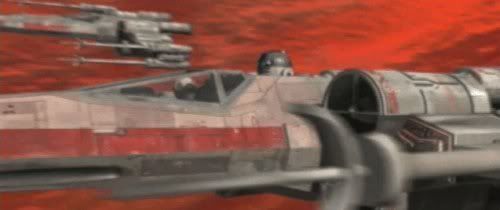
R2 is damaged during the attack, shot by his former partner Darth Vader in a moment of retrospectively dark irony (considering how the Battle of Naboo in "Phantom" mirrors this scene). But he's repaired in plenty of time for the ritualistic award ceremony at the (literally) Mayan ruins on Yavin IV.
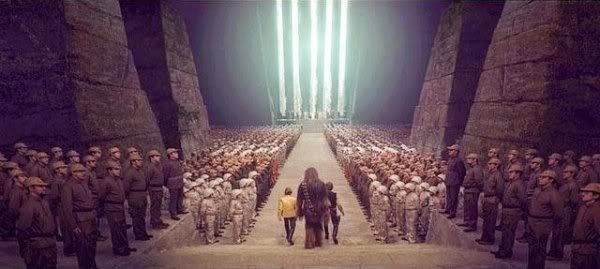
Destroying the Death Star takes a dangerous weapon away from the Imperials, but does little to otherwise help the Rebel cause. Vader grows obsessed with finding his son and the Rebels are chased from system to system. Luke leads the Rebels to Hoth two years after the Batle of Yavin and a year later Vader locates their Echo Base using wide dispersement of Viper probe droids. Luke witnesses the probe droid's landing while on patrol, but a Wompa attack interrupts his investigation. Part of the intent of "The Empire Strikes Back" is the development of the characters introduced in "A New Hope". It was important for director
Irvin Kershner that this include the Droids, and this is largely what we get from R2 in these opening scenes as he worries over Luke, unable to detect him with his sensors.
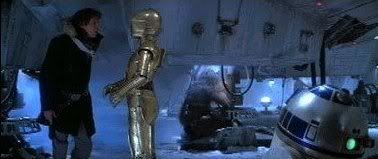
That he can't locate Luke might seem a contradiction of my view of a semi-omniscient R2-D2, but we can note that R2's lack of ability to find Luke furthers events by putting Luke in a situation where he has to activate his Force telekinesis for the first time, and then has his vision of Obi-Wan's ghost directing him to Yoda.

And may I remind you that Luke insisted on piloting to Dagobah. I wonder if R2 had been driving if they would have wound up with the X-Wing stuck in the bog. R2 and Yoda know each other and performed missions together during the Clone Wars. So why doesn't R2 clue Luke in when Yoda pops up?

Because R2 is well versed in the testing methods of the Jedi, and has been involved in the plan to turn Luke into a Jedi Knight for years. Looking at the Campbellian archetypes of this scene we have our solar hero interacting with two versions of the "little magical helper". In the "Empire" commentary Lucas discusses Yoda as the magical animal the hero encounters along his path. Showing kindness to the meek seeming creature causes the hero to be rewarded with a blessing or assistance of some kind. Yoda's wacky behavior when he meets Luke is a test, and R2 assists him, resisting Yoda's attempt to steal a flashlight (a Torch) to see if Luke's reaction is selfish or cruel.

Despite his whining and confusion Luke makes the right choice displaying a sympathy for the meek his father didn't possess. We then have a moment displaying that R2 doesn't take orders from Luke or anyone. Luke tells R2 to stay with the ship as he goes to Yoda's hut for some "leafroot". Instead R2 spies through Yoda's window standing on his "tippy-toes". He knows a monumental decision is being made by Yoda concerning Luke's future and the fate of the universe, and R2 has a vested interest in the outcome.
R2 observes and even participates a little in Luke's Force training, then leaves with Luke to rescue their friends on Cloud City. They're almost immediately separated, but R2 is the only one of the good guy for whom things go well in this episode. He meets up with Leia, Chewie, 3PO and Lando and assists in their escape. After they rescue the maimed and emotionally shattered Luke and escape into hyperspace, R2 conducts the symbolic act of putting 3PO back together again.
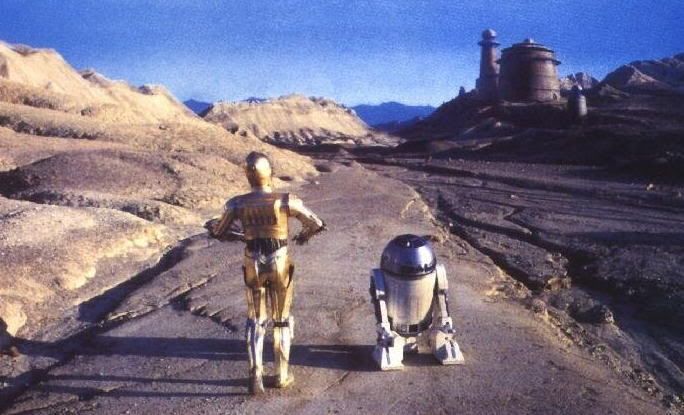
The next year (4 ABY) Luke utilizes the Droids' talents to rescue Han Solo from Jabba the Hutt. They easily work their way inside his fortress and get themselves positioned in the perfect positions amongst his droid staff.
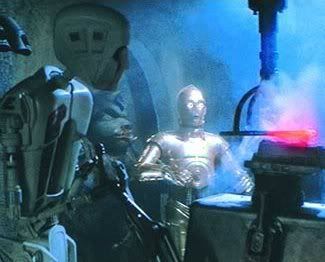
Note that droids clearly feel pain (or possess some self-integrity preserving program that mimics pain). R2 has Luke's lightsaber hidden inside him and launches it to him at the perfect moment. Either Luke or R2 had the foresight to realize that Jabba would opt to ritualistically execute them at the Pit of Carkoon. Otherwise, since R2 was assigned to the sail barge, the Trojan lightsaber trick wouldn't have been any help as R2 wouldn't have been at hand if, say, Jabba just had Boba Fett and his other body guards blast Luke and company in Jabba's throne room. So they must have gleaned what Jabba would do to the point where they could determine where Jabba would have R2 positioned or conditioned him (a 3PO job) to play into their hands. During the conflict its R2 who releases Leia from her chains and chases off Salacious Crumb before he does too much damage to 3PO.
Later, on the forest moon of Endor, all the boys, including the Droids, get snared in an Ewok net.
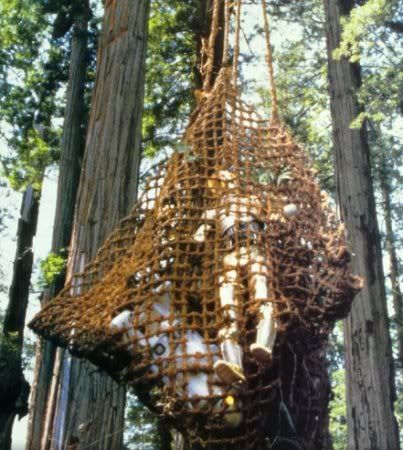
Of course it's R2 who cuts them free. Getting Ewoks to stop trying to kill you is more of a C-3PO job, and he performs the task so well the Rebels get themselves an army of killer teddy bear-dogs, truly pygmy Wookies in conception. Once the Ewoks have joined the Alliance they get along very well with R2, whose charisma is universal. His friendship with Wicket is particularly displayed, and the two characters are connected as described in
R2-D2 what are you?.
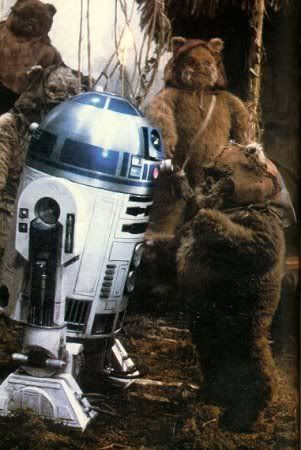
Returned to their Kurosawa roots, R2 and 3PO primarily spend the Endor battle watching from just beside the activity, probably mostly because there wasn't much either of them could do in the woods back before digital animation.
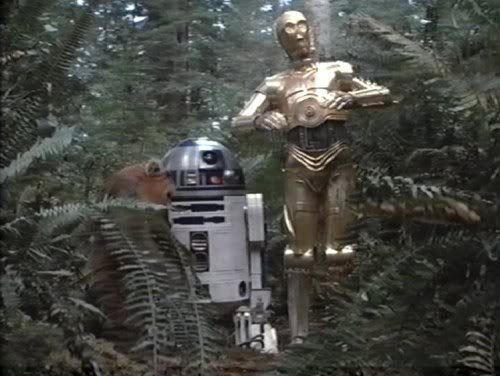
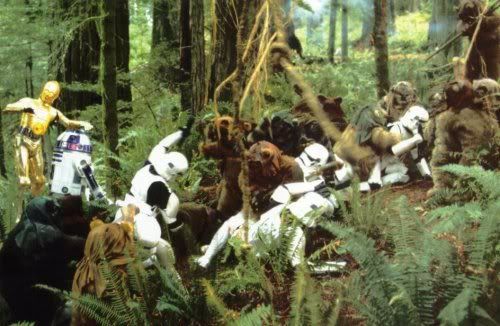
Really though, they make pretty effective generals. A lot of people have issues with the Ewok success against the Stormtroopers. Not me. Guerilla warfare enacted by clever, lethal bears on their own territory, with elaborate traps they were obviously familiar with utilizing, and directed by super-anthropologist C-3PO and super-cognitive R2-D2. And still it is a hard won victory as Leia is wounded and R2 seriously damaged trying to open the door to the Death Star shield generator bunker. Even Stormtroopers have to hit a target once in awhile. But as with "A New Hope" R2 is fully repaired in time for the victory celebration at Bright Tree Village.
In novels and comic books his adventures continue for another 133 years, making him at least 166 years old. His termination has yet to be depicted, and I wonder if it ever will be. The only post "Return of the Jedi" material I'm at all familiar with is Timothy Zahn's "Thrawn Trilogy", and I read that ages ago. Judging by the Wookieepedia history of R2, there are a few interesting details that further some of my key points regarding R2. Despite continuing to be described as "owned" by Luke (impossible) and later Skywalker descendants, he seems much more a free agent as he also shares adventures with Han, Leia, Lando, Chewbacca and of course C-3PO, often without Luke present.
In 11ABY R2 assists Luke in reestablishing a Jedi Academy by sifting through data for potential candidates, and then travels with Lando and 3PO to recruit one of the candidates (in Kevin J. Anderson's 1994 novel "Jedi Search"). One EU novel I have no interest in is "Children of the Jedi" by Barbara Hambly because she plays the "faithful-robot goes temporarily rogue" card, having a dark Force practitioner learn how to control droids and make R2 plant explosives in the Solos' quarters, almost killing them, and forcing Han to blast R2. Ick. It makes me feel nasty just thinking about it, just like I expected it should, Toto with rabies. R2's memories of Padmé Amidala and the manner of her death becomes a plot point in Troy Denning's "Dark Nest" trilogy, set in 35-36 ABY, where his motives for keeping the information to himself for so long is explained as an act of sympathy for Luke and Leia. I might have to check that one out.
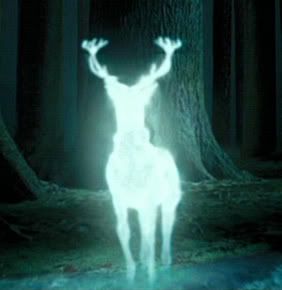 Harry's Patronus from "Prisoner of Azkaban", a stag related to his father's animagus form
Harry's Patronus from "Prisoner of Azkaban", a stag related to his father's animagus form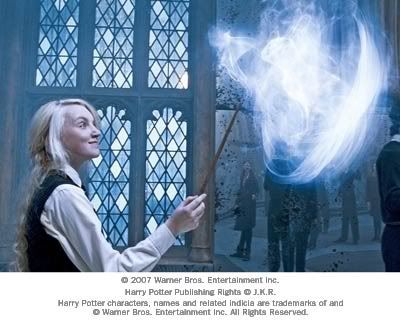
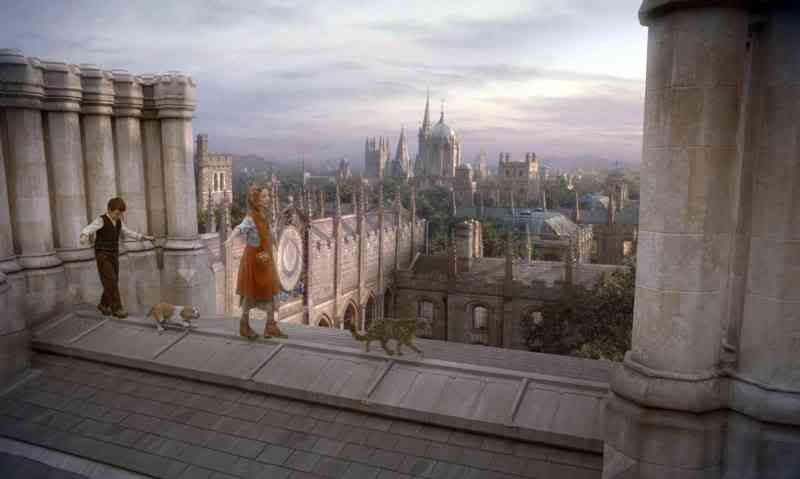

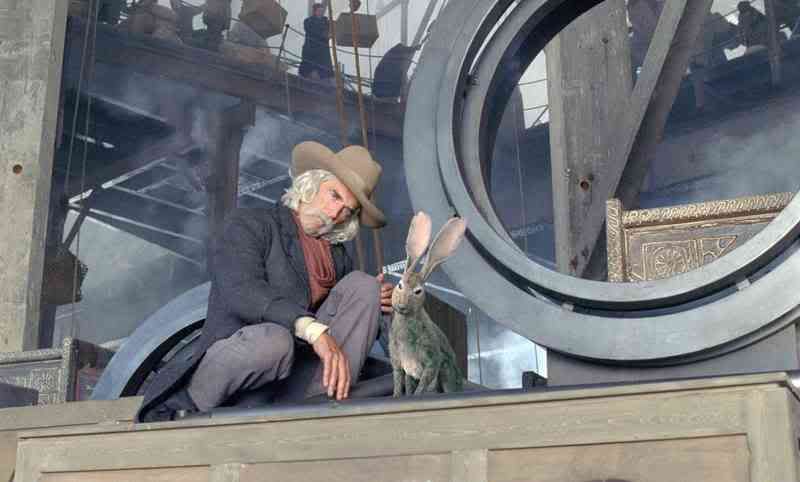
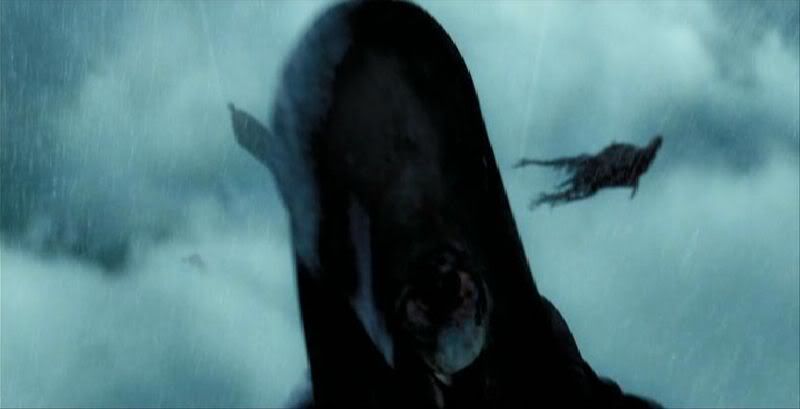
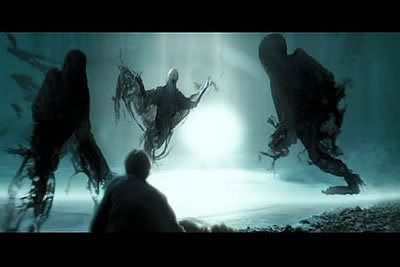
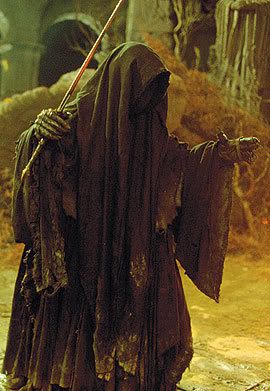
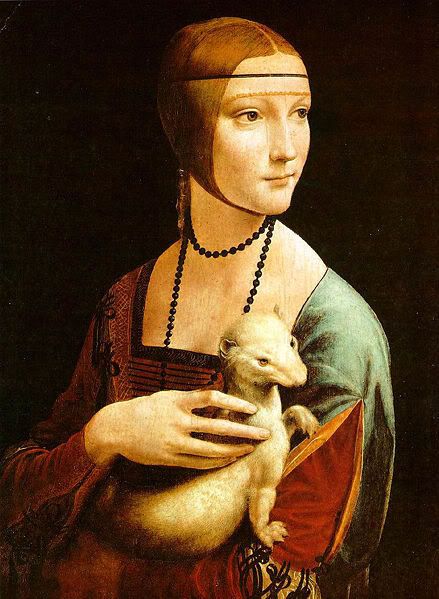
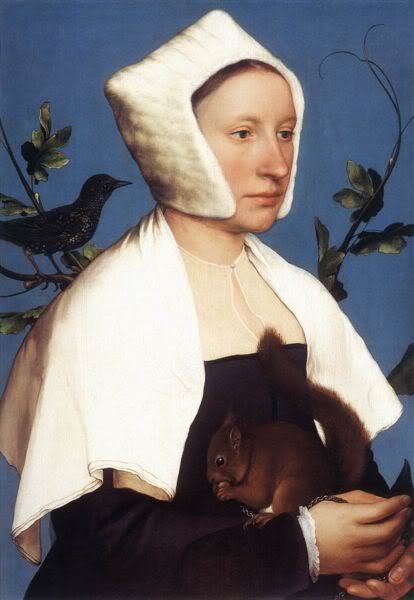 Hans Holbein the Younger, "Lady with a Squirrel" c. 1526-28
Hans Holbein the Younger, "Lady with a Squirrel" c. 1526-28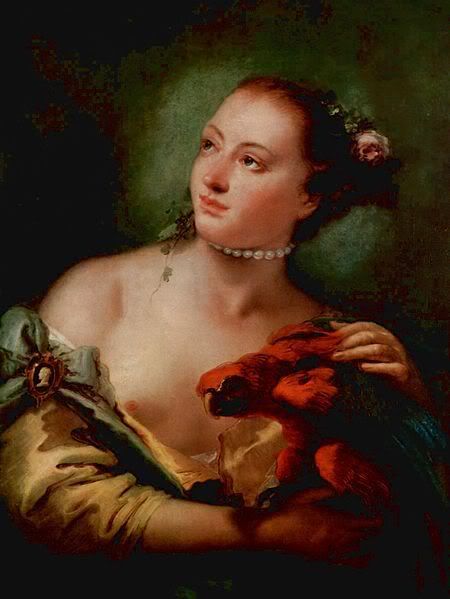 Giovanni Battista Tiepolo, "Young Lady with a Parrot" c. 1758-60
Giovanni Battista Tiepolo, "Young Lady with a Parrot" c. 1758-60